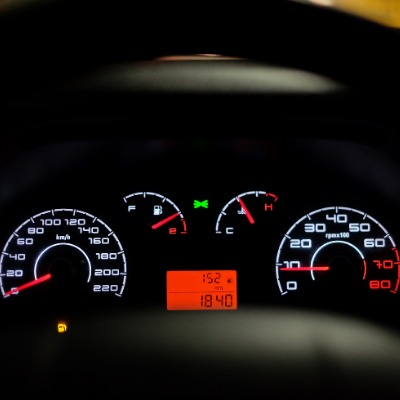Mar 16, 2021

Cars need engine oil to survive because without it, your car won’t be able to function and using your car without it may cause severe and potentially irreversible damage to the engine. Often, the low oil pressure warning light on your dashboard isn’t something you will see very often but if it does, you need to pull over as soon as it’s safe to do so.
When the engine oil pressure light comes on, it is signalling that there is not enough oil pressure or the oil level is low. This then prevents the oil from providing lubrication to the moving parts which can result in the engine seizing or as we mentioned, resulting in damage that is irreparable.
When the low oil pressure light illuminates on your car, it’s telling you that you need to stop driving, turn off the engine and check the oil level once it’s safe to do so. Common causes that trigger the low oil pressure light are:
● Low/Old Oil: Regular car maintenance is key, and an oil change should always be on your to-do list every couple of months or between every 5,000 miles as this ensures it’s only clean, fresh oil circulating in your engine.
● Engine Wear: This light can also be a sign of worn parts in the engine, causing a reduction in oil pressure.
● Worn Components: Each engine component contributes to the combustion process and when these fail, the oil can unintentionally enter the combustion chamber and get burned, leading to a drop in pressure.
● Fault with Oil Pressure Gauge: You may find that after checking you have sufficient oil in the system and it may be perfectly fine. However, this doesn’t mean you’re out of the woods as this issue could lie within the pressure gauge, resulting in a false reading.
● Clogged/Dirty Filters: Oil filters help maintain oil pressure and when they become clogged it results in increased pressure, and with that comes a reduced flow. A pressure relief valve on the oil filter may also be damaged, meaning it won’t be able to allow engine oil to flow easily.
● Oil Pump Faults: This issue may create wider passageways, causing a drop in the rate of flow.
● Oil Viscosity: Higher viscosity means the oil is thick and can’t flow as quickly, this then affects the oil pressure.
● Overheating Engine: If your engine is overheating, it’s not only an issue for the driver but is hard on the engine too as it causes the oil to thin and prevents pressure build-up.
As we mentioned, you want to change your engine oil every 5,000 miles or between every 3-6 months depending on your personal driving habits. If you need a helping hand from a mechanic to check over your engine oil pressure light issue, get quotes from local mechanics in your area today with MyCarNeedsA.com, saving you both time and money! Get your quotes!